
Mastering The Art of Decanting Wine: A Beginner's Guide
Don't be intimidated by decanting wine - it's not just for snobs! Learn why and how to do it with this fun, beginner-friendly guide from Your Wines. Cheers to better-tasting...
*No code needed — discount applied at checkout.
Tyrrells Old Winery
Tyrrells Old Winery Chardonnay 2025 (12 Bottles)
Yellow Tail
Yellow Tail Chardonnay 2025 (12 bottles)
De Bortoli Wines
DB Winemakers Selection Chardonnay (12 Bottles)
De Bortoli
De Bortoli Scarlett's Brook Chardonnay 2018 (12 bottles)
De Bortoli Wines
De Bortoli Deen Vat 7 Chardonnay (12 Bottles)
Brookland Valley
Goundrey Homestead Unwooded Chardonnay NV (12 bottles)
Pirramimma
Pirramimma White Label Barrel Fermented Chardonnay 2021 (12 Bottles)
Calabria Family Wines
Calabria Whistling Duck Chardonnay Riverina (12 Bottles)
Elephant in the Room
Elephant in the Room Small Barrel Adelaide Hills Chardonnay (12 bottles)
McPherson Family Vineyards
McPherson Family Catriona’s Chardonnay (12 Bottles)
De Bortoli Wines
De Bortoli Windy Peak Chardonnay (12 Bottles)
Bimbadgen
Bimbadgen 'Growers Range' Chardonnay, 2023 (12 bottles)
Chardonnay is a grape that resonates with wine enthusiasts worldwide for a good reason. This white wine grape varietal has carved a unique niche, offering diverse flavours and styles that cater to a vast spectrum of preferences. Whether you revel in the crisp and tangy notes of green apple or lean towards the luxurious, buttery textures, there's a Chardonnay out there waiting to savour. Let's dive into the essence of Chardonnay and unlock its various expressions, mainly focusing on the pours from Australia.
Chardonnay is among the most popular and widely planted white wine grapes. But what precisely makes it such a sought-after varietal? Chardonnay is exquisite in its ability to adapt to various climates and winemaking techniques, effectively capturing the essence of its terroir while still bearing the winemaker's signature style. Perhaps this unmatched versatility has led to its global cultivation and enduring popularity.
Though its origins lie in the Burgundy region of France, the grape has found a welcoming second home in various wine regions around the globe, where it continues to express unique characteristics that are influenced by locale and craftsmanship.
Q: What defines Chardonnay as a wine varietal?
A: Chardonnay is a versatile white wine grape variety that can produce a wide range of styles, from crisp and unoaked to rich and buttery. It is one of the most planted white grape varieties globally.
Q: What characterises Chardonnay wine?
A: Chardonnay wine is known for its diverse flavour profile, which can include notes of green apple, citrus, melon, and, in some styles, a creamy or buttery texture. The grape's adaptability allows winemakers to craft Chardonnays with varying levels of oak influence.
Q: What distinguishes a buttery Chardonnay from other styles?
A: Butteriness in Chardonnay is often associated with a winemaking technique called malolactic fermentation and oak ageing. This imparts creamy, buttery flavours and a rounded mouthfeel to the wine.
Q: Which regions in Australia are renowned for producing the best Chardonnay?
A: Margaret River, Yarra Valley, Adelaide Hills, and Tasmania are considered some of the best regions in Australia for Chardonnay. Each region imparts its unique characteristics, from the richness of Margaret River to the elegance of Tasmania.
Q: What makes Margaret River Chardonnay stand out?
A: Margaret River Chardonnay is known for its exceptional quality, often exhibiting a balance of ripe fruit flavours, bright acidity, and well-integrated oak. The region's maritime climate contributes to developing complex and elegant Chardonnays.
Q: How does Yarra Valley Chardonnay differ from other regions?
A: Yarra Valley Chardonnay is praised for its cool-climate elegance. These wines often showcase citrus, stone fruit flavours, and crisp acidity. Yarra Valley's terroir adds a distinctive character to its Chardonnays.
Q: What can one expect from Adelaide Hills Chardonnay?
A: Adelaide Hills Chardonnay is celebrated for its vibrant acidity and cool-climate expression. The wines typically display citrus and green apple notes with a refreshing and zesty profile.
Q: How is Tasmania Chardonnay characterised?
A: Tasmania Chardonnay is known for its purity and finesse. The cool climate allows for a slow ripening process, resulting in wines with intense flavours, natural acidity, and a distinct minerality.
Q: What are some of the best Australian Chardonnays to explore?
A: Look for Chardonnays from renowned producers in Margaret River, Yarra Valley, Adelaide Hills, and Tasmania. Specific labels may include the Leeuwin Estate Art Series, Giant Steps, Shaw + Smith, and Tolpuddle Vineyard.
Q: How does Chardonnay differ from Sauvignon Blanc regarding taste and style?
A: Chardonnay is known for its versatility, offering a wide range of flavours, from crisp and unoaked to rich buttery. Sauvignon Blanc, on the other hand, tends to be more herbaceous and zesty, with prominent citrus and green notes.
Q: What is the correct pronunciation of Chardonnay?
A: Chardonnay is pronounced "shar-duh-nay." The emphasis is on the second syllable, and the "ch" is pronounced like "sh."
Q: What is the origin of the Chardonnay grape?
A: Chardonnay originated in the Burgundy region of France. It has since become a globally planted grape variety, with significant plantings in California, Australia, and New Zealand.
Q: How would you describe the taste of Chardonnay wine?
A: Chardonnay wines range from crisp and citrusy to rich buttery. Common flavour profiles include green apple, melon, tropical fruits, and, in some styles, notes of vanilla and toast from oak ageing.
Q: Is Chardonnay typically a sweet wine?
A: Chardonnay is usually a dry wine containing little to no residual sugar. However, the perception of sweetness can vary depending on the winemaking style, with some Chardonnays exhibiting a fruity or buttery sweetness.
Q: Can Chardonnay be produced as a red wine?
A: No, Chardonnay is a white grape variety. While there are red grape varieties related to Chardonnay (such as Pinot Noir), Chardonnay itself is used exclusively for white wine production.
Q: What is the ageing potential of Chardonnay wines?
A: Chardonnay's ageing potential varies depending on the style. Crisp and unoaked Chardonnays are best enjoyed within a few years, while well-structured, oaked Chardonnays from premium regions can age gracefully for 5-10 years or more.
Q: What is the recommended way to drink Chardonnay?
A: Serve Chardonnay slightly chilled, around 10-13°C (50-55°F) for unoaked styles and 13-16°C (55-60°F) for oaked styles. Use tulip-shaped glasses to enhance the wine's aromas, and consider allowing it to breathe briefly before sipping.
Q: What types of food pair well with Chardonnay?
A: Chardonnay is a versatile wine that pairs well with various dishes. It complements seafood, poultry, creamy pasta, and dishes with butter or cream sauces. Soft cheeses and dishes featuring mild herbs are also excellent choices.
Q: Is Chardonnay suitable for cooking?
A: Yes, Chardonnay can be used in cooking to enhance the flavours of dishes
Chardonnay is a charismatic and all-embracing grape that speaks the language of its homeland fluently while embracing the influences of winemakers and regional characteristics. It is a continuously evolving wine, promising something new with each tasting experience.
So, whether you're a seasoned Chardonnay lover or new to this varietal, the invitation stands to explore and indulge in the boundless world of Chardonnay wines. Chardonnay offers everything from the crisp, mineral-led profiles to the sumptuous, buttery delights. Uncork a bottle, pour a glass, and rejoice in the virtuosity of Chardonnay—a true gem in the world of wines.
To all the wine adventurers willing to step into the vineyard of discovery, let the allure of Chardonnay guide your next journey. Cheers!

Don't be intimidated by decanting wine - it's not just for snobs! Learn why and how to do it with this fun, beginner-friendly guide from Your Wines. Cheers to better-tasting...
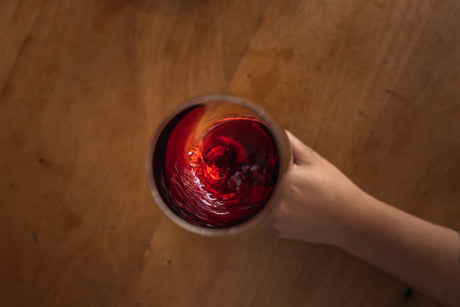
Bored with the same old Pinot Noir? These five alternative red wines share some characteristics of your favourite Pinot but also bring something new to spice things up. Cheers to...
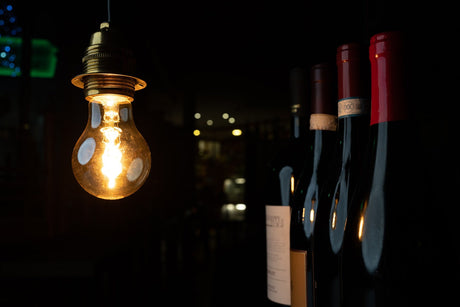
Want to impress your friends with some fancy wine tricks? Look no further! From quick chilling methods to uncorking without a corkscrew, these clever tips will elevate your wine game....

Spice up your New Year's Eve celebrations with our list of the best sparkling wines Australia has to offer. From crisp and refreshing to full-bodied and complex, find your perfect...

Who says sparkling wine is just for special occasions? Discover 5 fun and unexpected pairings that elevate your everyday Aussie snacking experience. Cheers!
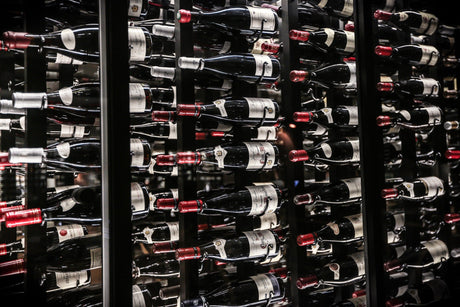
Join us on an adventure to uncover the history and allure behind Australia's love for Shiraz. From its bold flavours to its global recognition, discover why this wine reigns supreme...
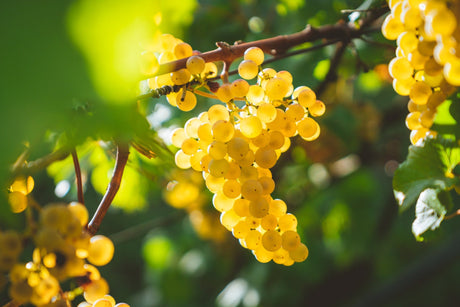
Are you a Chardonnay lover looking to expand your wine horizons? Check out these top five alternative white wines that are sure to impress your palate and liven up any...

Who says celebrations have to be expensive? Check out these five pocket-friendly sparkling wine suggestions that will make your taste buds dance. Perfect for holidays, special occasions, or just a...
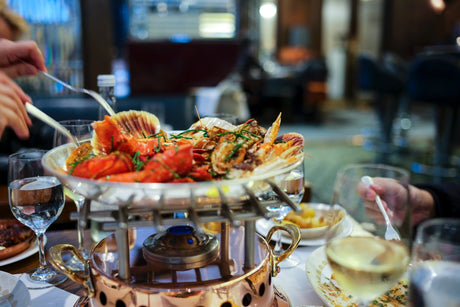
Get ready to sip your way into summer with these amazing wine pairings for seafood dishes! Find out which wines will perfectly accompany all your favourite dishes.